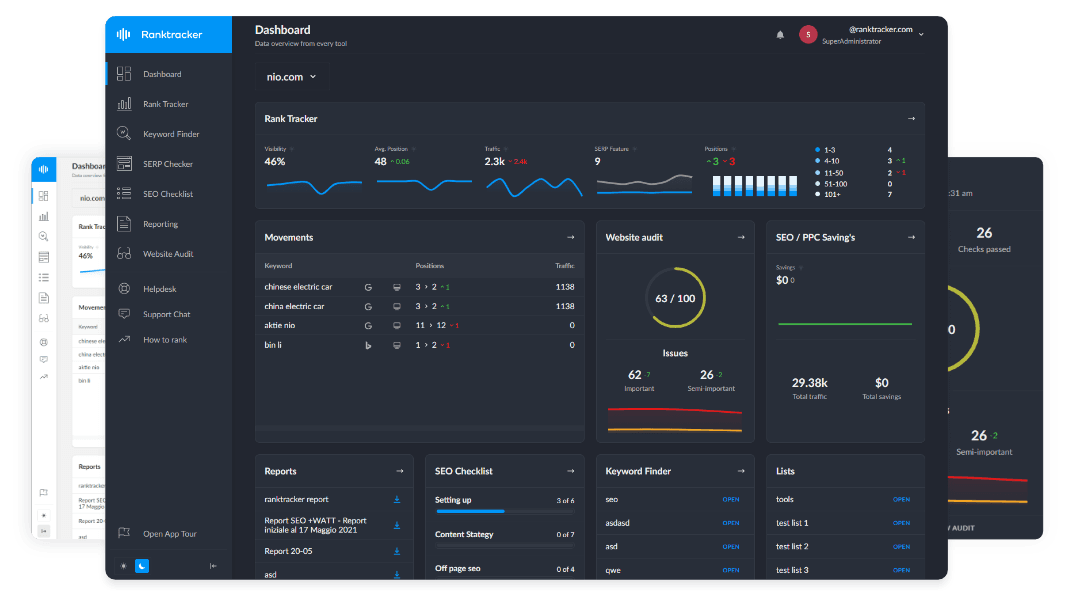Intro
Financial services belong to the YMYL (Your Money or Your Life) category, which means that any mistake in content can lead to serious consequences — both for the user and for the website. Loan pages are one of the most sensitive niches where Google has stricter requirements. This is exactly where sanctions most often occur after a Google update, and SEO becomes especially challenging.
In this article, we will analyze which content patterns help build trust, pass compliance, and at the same time maintain positions in search results. We will look at practices for YMYL content, discuss the specifics of YMYL pages, and explain how content marketing for financial services works specifically in the loan niche.
Why YMYL is Especially Important For Loan Pages
YMYL pages are addresses whose content directly affects a person’s money, health, or safety. Loan pages fall into the highest risk category, including:
-
Web pages that help a user make a borrowing decision;
-
Pages with financial data that, if presented incorrectly, may cause legal issues;
-
Sites where the information directly impacts people’s money and financial health.
Google clearly states: such pages require expertise, accuracy, and transparency. Any attempt to hide details, disguise terms, or overuse aggressive marketing leads to a drop in rankings. This, in turn, reduces traffic and revenue.
Key Content Patterns That Help Pass Compliance
To build trust and meet regulatory standards, loan pages must follow clear patterns of content creation. Below are the core principles that help financial websites stay transparent, user-friendly, and compliant.
1. Transparency of terms
Loan pages must explain the terms of borrowing as honestly as possible, including interest rate, deadlines, fees and penalties. Information about them must be clearly visible, structured, and provided to the user before he makes a decision about the loan.
Tables and infographics will always be a better solution than fine print at the bottom of the page. Although this trick helps avoid many difficulties, it reduces user trust.
It is also important to spell out all the terms regarding extra costs, overpayments, and possible penalties. Hidden conditions discovered later by the client may discourage them or come as an unpleasant surprise, which again leads to complications or even lawsuits.
2. Expertise and authorship
Google requires E-E-A-T (Experience, Expertise, Authoritativeness, Trustworthiness). Therefore, every material on YMYL pages must have a real author, as well as an expert foundation and legal basis.
An important factor is the technological transformation of the market. As noted by Latoria Williams, CEO of 1F Cash Advance:
_“Nowadays, financial companies and services must be extremely careful about the content they publish online. First and foremost, it represents the consumer’s trust. Any inaccuracy can backfire and lead to a loss of reputation, which will ultimately affect profitability.”_
Modern technologies are moving away from the principles of paper agreements, where fine print on the last page or an “additional agreement” often came as a surprise to the consumer. Therefore, today’s market players should take full responsibility for the content published on online resources.
3. Fact-checking and references to sources
The All-in-One Platform for Effective SEO
Behind every successful business is a strong SEO campaign. But with countless optimization tools and techniques out there to choose from, it can be hard to know where to start. Well, fear no more, cause I've got just the thing to help. Presenting the Ranktracker all-in-one platform for effective SEO
We have finally opened registration to Ranktracker absolutely free!
Create a free accountOr Sign in using your credentials
It is extremely important to verify all information and update it in a timely manner. Of course, this should be done only using reliable sources. The main thing is not to mislead people. To avoid this, the following is necessary:
-
Provide statistics on average APR to be more transparent;
-
Reference regulators (CFPB, FTC, local laws), increasing consumer trust by backing claims with facts;
-
Indicate the date of data updates, track even minor product changes.
4. User-first approach
The loan niche often suffers from complex wording. The best pattern is to explain things simply. Many borrowers are not always familiar with professional terminology and abbreviations. It is important to provide clear, structured information, for example:
-
Use glossaries (APR, rollover, payday loan);
-
Include FAQs with real customer questions and answers;
-
Add cases or real-life examples.
5. Commercial honesty
Many financial services use various tricks to increase traffic, as well as implausible advertising to attract more consumers. Such an approach is acceptable only if it is supported by actual facts about the products.
A bad example would be clickbait headlines like “Loan with no interest and no risks!”. This misleads consumers, which later turns into dissatisfaction and may lead to disputes. It is better to use more moderate headlines.
Avoid aggressive calls-to-action that mask risks. It is better to make it clear from the start what the consumer will receive and what the risks are. This increases trust in the company and the product, and also allows the client to make a balanced decision about the product they can really afford.
The best practice is to use a neutral, informative tone with minimal flashy or unrealistic promises.
SEO And Google Updates
Every Google update increasingly impacts YMYL. This is especially true for loan pages. Here are some examples of the latest ones and what aspects they cover:
-
Helpful Content Update requires writing for people, not algorithms. This complicates the work but allows authors and SEO specialists to create more informative content that is helpful for users.
-
Core Updates increase attention to authorship and credibility. Links, terms, and offers are now checked more thoroughly. This requires more expertise and transparency, but also allows the consumer to get a full view of the product immediately.
-
Spammy strategies (keyword stuffing, duplication) lead to sanctions, though not strictly prohibited. They also allow softer integration of links and KW into texts, even in indirectly related contexts, which expands media planning horizons.
SEO for YMYL content now is about trust and expertise in one. If before it was enough to place keywords, today Google requires a comprehensive approach.
Content Marketing For Financial Services
Financial services are not only about loan pages. They include blogs, educational articles, calculators, and checklists. But the loan niche is especially demanding.
Here are just a few types of content that can be used to increase credibility among users in the digital space::
-
Guides: “How to choose a loan considering APR”, “Common mistakes made by beginners”.
-
Comparison tables: transparent, with pros and cons, and overall indicators of each product.
-
Calculators: simple UX that helps understand real overpayments, deadlines, and customer capabilities.
-
User stories: how a loan helped solve a problem (without aggressive sales, with verified examples).
According to Google's current policy, a neutral tone is the best option. Sites with overly aggressive marketing lose not only the trust of experienced users but also of the platform’s algorithms.
Checklist For Loan Pages
Before creating or optimizing content related to loans and other financial services, it is crucial to ensure that the page and its material comply with standards and do not mislead the user. To achieve this, the following checklist can be used:
-
Does the page have an author with confirmed expertise?
-
Are all loan conditions spelled out (APR, fees, terms)?
-
Are sources and references to regulators provided?
-
Is there a FAQ and glossary?
-
Is the page optimized for UX: easy to find, compare and calculate?
-
Is the tone neutral and honest?
-
Is the content updated and verified?
Conclusion
Loan pages are the core of financial content, where Google’s requirements are especially strict. To pass compliance and maintain SEO positions, specific content patterns are necessary: transparency, expertise, fact-checking, and a user-first approach.
YMYL content in 2025 is not just about keywords but about client and platform trust. YMYL pages must help users make informed product decisions. And content marketing for financial services in the loan niche is built on honesty and transparency.
Financial companies that integrate these practices not only pass compliance but also build long-term audience trust while continuing to grow their reach in search engines.

